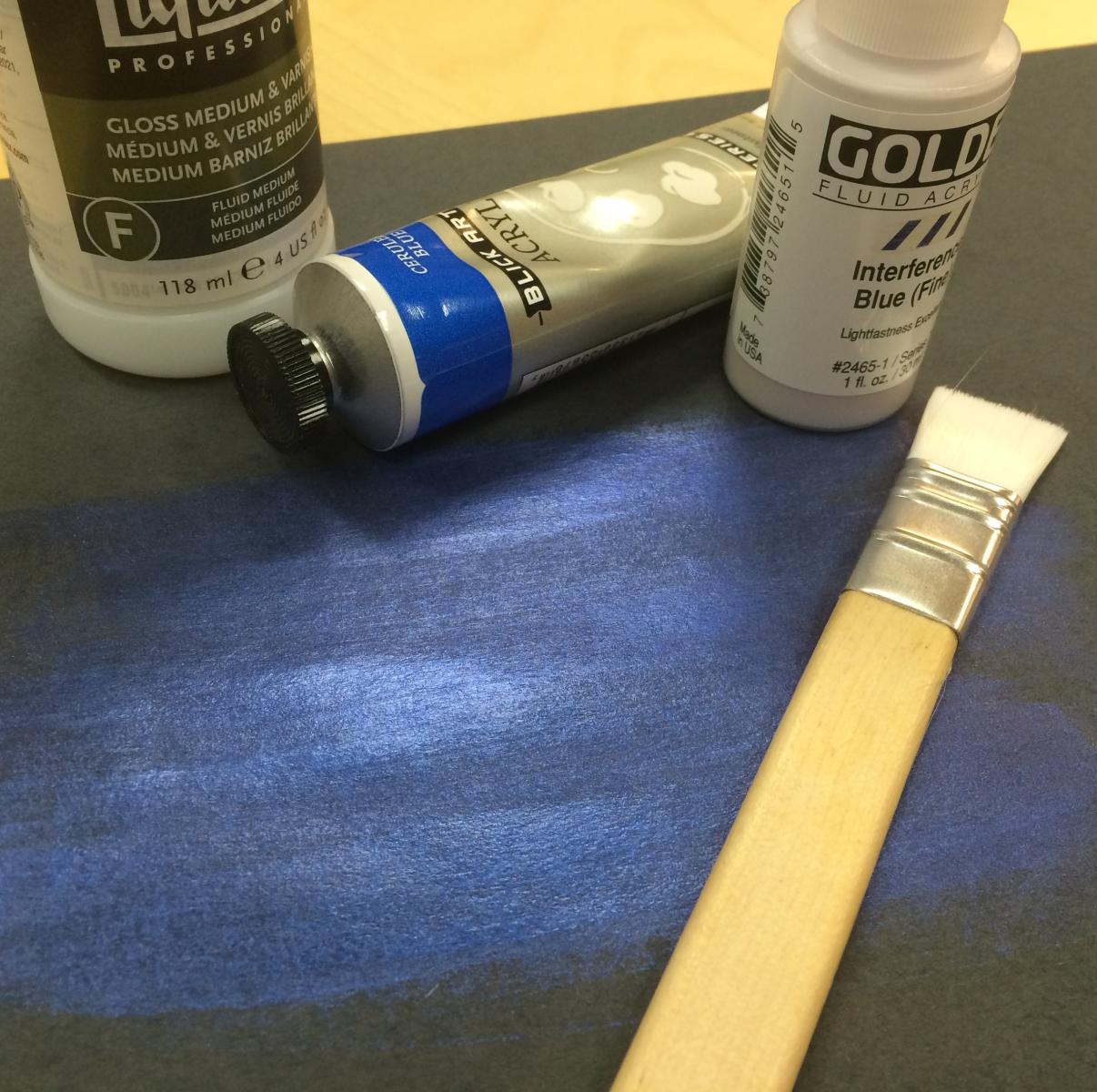DESCRIPTION
In this activity, students learn about structural color while exploring interference paints. Students compare interference acrylic paints to normal acrylic paints. Students also observe how the color of the paint changes when it’s applied to different paper, or viewed from a different angle.
DESCRIPTION
In this activity, students learn about structural color while exploring interference paints. Students compare interference acrylic paints to normal acrylic paints. Students also observe how the color of the paint changes when it’s applied to different paper, or viewed from a different angle.
OBJECTIVES
BIG IDEA
Many of the colors we see are due to pigments or dyes, but other colors are due to the way light interacts with particular structures. Artists and engineers take advantage of structural color to engineer specific colors and aesthetics.
LEARNING GOALS
Learn how pigments and dyes make materials appear colored
Learn what structural color is
Learn what interference paints are made of
Learn why the background color affects the color of interference paints
NANO CONTENT MAP
Nanometer-sized things are very small, and often behave differently than larger things do.
Scientists and engineers have formed the interdisciplinary field of nanotechnology by investigating properties and manipulating matter at the nanoscale.
Nanoscience, nanotechnology, and nanoengineering lead to new knowledge and innovations that weren't possible before.
Credits
Lawrence Hall of Science
Developed for the NISE Network with funding from the National Science Foundation under Award Numbers 0532536 and 0940143 and for University of California Berkeley with funding from the National Science Foundation under award Number 1055938. Any opinions, findings, and conclusions or recommendations expressed in this product are those of the authors and do not necessarily reflect the views of the Foundation.
This linked product was created by another institution (not by the NISE Network). Contact owning institution regarding rights and permissions.
NISE Network products are developed through an iterative collaborative process that includes scientific review, peer review, and visitor evaluation in accordance with an inclusive audiences approach. Products are designed to be easily edited and adapted for different audiences under a Creative Commons Attribution Non-Commercial Share Alike license. To learn more, visit our Development Process page.

